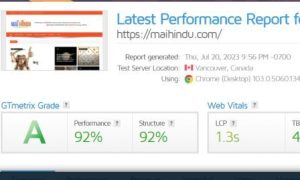
Keyword Research Unleashed: Your Guide to Dominating Online
Keyword Research Unleashed: Your Guide to Dominating Online Understanding and implementing effective Keyword Research strategies can significantly impact a website’s visibility, organic traffic, and overall success. In the vast landscape of the internet, where billions of websites compete for attention, how can one website stand out from the rest? The answer lies in the art and science of Keyword Research. In this comprehensive guide, we will demystify the concept of Keyword Research, explore its importance, and provide practical tips to leverage its power for online success. What is Keyword Research? Keyword Research is the foundation of Search Engine Optimization (SEO). It involves identifying and analyzing the words and phrases that users input into search engines like Google when looking for information, products, or services. By understanding the specific keywords your target audience is using, you can optimize your website’s content and improve its chances of appearing higher in search engine results pages (SERPs). Importance of Keyword Research Keyword Research is not merely about finding a list of words; it’s about understanding the language of your audience. By knowing the keywords potential visitors use, you gain valuable insights into their interests, needs, and pain points. Armed with this knowledge, you can create content that resonates with your audience, building trust and credibility. Moreover, Keyword Research can also help you identify untapped opportunities and niche markets. By targeting relevant and low-competition keywords, you can attract a more specific and engaged audience, increasing your chances of converting visitors into customers or subscribers. Types of Keywords In Keyword Research, it’s essential to recognize the different types of keywords that users employ during their online searches. Here are some of the most common types: Short-tail Keywords: These are brief and general keywords, usually one to three words long. While they have high search volumes, they also face intense competition. For example, “Keyword Research” is a short-tail keyword. Long-tail Keywords: These are longer and more specific phrases, often containing three or more words. Long-tail keywords may have lower search volumes, but they usually exhibit higher conversion rates due to their specificity. For example, “Best Keyword Research tools for beginners” is a long-tail keyword. LSI Keywords (Latent Semantic Indexing): LSI keywords are related terms and phrases that search engines associate with a specific topic. They help search engines understand the context of your content and improve its relevancy. For example, if your primary keyword is “Keyword Research,” LSI keywords could include “SEO,” “organic traffic,” and “search engine optimization.” Tools for Keyword Research To uncover valuable keywords for your website, you can rely on various tools designed specifically for Keyword Research. Some popular ones include: Google Keyword Planner: A free tool offered by Google Ads, it provides valuable data on keyword search volumes and competition levels. Ahrefs: This comprehensive SEO tool offers detailed insights into keyword difficulty, search volumes, and competitor analysis. SEMrush: Another powerful SEO suite, SEMrush helps identify keyword opportunities, conduct competitor research, and track keyword rankings. Ubersuggest: Developed by Neil Patel, Ubersuggest offers keyword suggestions, search volume data, and competitive analysis. Choosing the Right Keywords Selecting the right keywords is crucial for a successful SEO strategy. Simply targeting high-volume keywords may not be enough, especially if they face fierce competition. Instead, a smart approach is to strike a balance between search volume and competition, while also considering the intent of the user. The intent of a keyword refers to the user’s goal behind the search. It can be categorized into three main types: Informational Intent: When users are seeking information or answers to their questions. For example, “What is Keyword Research?” Navigational Intent: When users are searching for a specific website or brand. For example, “Keyword Research on Google.” Transactional Intent: When users are ready to make a purchase or take a specific action. For example, “Buy Keyword Research tool.” By understanding the intent behind the keywords, you can tailor your content to meet the needs of your audience and increase the likelihood of attracting qualified traffic. Creating High-Quality Content with Keywords Once you have identified the right keywords, the next step is to incorporate them strategically into your content. However, keyword stuffing, which is the excessive and unnatural use of keywords, should be strictly avoided. Search engines now prioritize user experience, and stuffing your content with keywords can result in penalization. Instead, follow these best practices for incorporating keywords: Use Keywords in Page Titles: Including your primary keyword in the title of your page can help search engines understand the page’s focus. Write Compelling Meta Descriptions: Although meta descriptions don’t directly impact rankings, they can influence click-through rates. Use relevant keywords to entice users to click on your link. Create High-Quality and Relevant Content: Develop content that addresses the user’s search intent while naturally incorporating keywords. Use Headers (H1, H2, H3, etc.): Organize your content with headers and sub-headers that include relevant keywords to improve readability and SEO. Optimize Images: Use descriptive filenames and alt text for images that contain relevant keywords. Consider User Experience: Ensure that your content is engaging, informative, and easy to navigate, catering to the needs of your target audience. Monitoring and Adapting Keyword Strategy Keyword Research is not a one-time task. It’s an ongoing process that requires constant monitoring and adaptation. Search trends, user behavior, and industry dynamics can change over time, so it’s essential to stay up-to-date and refine your keyword strategy accordingly. Keep a close eye on the performance of your chosen keywords. Tools like Google Analytics can provide valuable insights into which keywords are driving the most traffic and conversions. If certain keywords are not delivering the desired results, consider replacing them with more effective alternatives. Moreover, regularly monitoring your competitors’ keywords can also provide valuable insights and help you stay ahead of the game. Keep an eye on their content strategies and identify potential keyword opportunities that they might have missed. Conclusion Keyword Research is undeniably a fundamental aspect of any successful SEO strategy. By understanding the language of your audience and optimizing your
Keyword Research Unleashed: Your Guide to Dominating Online Read More »









